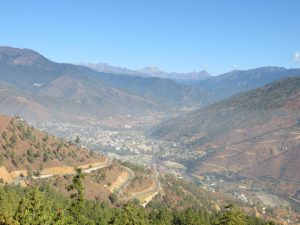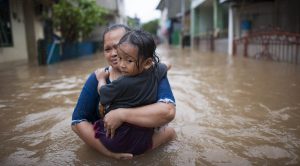The rapid melting of glaciers and reduced snowfall in the Himalayas due to climate change will cause water and food shortage for more than eight hundred million people inhabiting the region if effective adaptation and mitigation measures are not implemented before 2030, scientists and experts said.
“The degradation of the Himalayan ecosystem due to climate change is going to adversely impact water and food security for millions of people across South Asia and South-East Asia, including China,” Cheppudira Muthanna, the secretary for India’s Environment and Health Foundation, told thethirdpole.net last week.
Along with around five hundred representatives from governments, non-governmental organisations and the corporate sector across 50 different countries, Muthanna was participating in the 7th Regional Conservation Forum organised by the International Union for Conservation of Nature (IUCN) and the Ministry of Climate Change in Islamabad.
It is vital to realise that we don’t have the luxury of time.Cheppudira Muthanna
Nearly 170 delegates from Asian countries had attended the event entitled “Greening Asia for Nature and People” to discuss and explain different adaptation and mitigation measures to curb adverse impacts of climate change.
“It is evident from scientific studies that if the trends of reduced snowfall, increased precipitation and shrinking of Himalayan glaciers continue at this pace, the results will be catastrophic for millions of people in the Himalaya and Mekong region,” Muthanna said. “Food productivity of the entire region will be adversely affected due to droughts and floods.”
The Himalayan mountain range is 2,500 kilometers long with an average width of around 300 kilometers spanning China, Pakistan, India, Nepal and Bhutan. It is home to around 15,000 glaciers, holding around 600 billion tonnes of ice, which feed major perennial river systems including the Indus and Mekong, and sustain 1.65 billion people — over 20% of the world’s population] across the region.
The Himalayas and Mekong basin consist of eleven countries, including China, Pakistan, India, Nepal, Bhutan, Bangladesh, Myanmar, Vietnam, Laos, Cambodia, and Thailand.
“It is vital to realise that we don’t have the luxury of time,” Muthanna said, “the clock is ticking and we must act now before it is too late.” He said that if reductions in the Short-Lived Climate Pollutants (SLCPs) were delayed until 2030, it would be more difficult — if not impossible — to keep warming under 2°C by the end of the century.
Listing out the main sources of black carbon emissions in the Himalayas and Mekong basin, he urged policymakers to distribute eco-friendly stoves in mountainous communities, improve brick kilns’ technology, cut vehicular emissions, curb forest fires and stubble burning to deal with the challenge.
The Himalayan glaciers, considered the “third pole” of the world because of the sheer volume of ice they hold, melted 10 inches to 20 inches — which is twice as quickly — between 2000 and 2016 as compared to 1975 and 2000, a new study shows.
“Shrinking Himalayan glaciers pose challenges to societies and policy-makers,” says the study, published in the journal Science Advances. It adds that melting glaciers contribute to “seasonal runoff, especially in climatically drier western regions, and increase risk of outburst floods due to expansion of unstable proglacial lakes.”
The IUCN’s ‘Asia Regional Conservation Forum’ in Islamabad was part of an effort to collect different successful climate change adaptation and mitigation stories from experts and scientists for its World Conservation Forum that is scheduled to be held in France in June next year. Around 14,000 people including experts, representatives of governments and NGOs will be participating in the forum to discuss sustainable development and green growth across the globe.
“Everybody across the globe can feel the negative impacts of climate change. We need to act as quickly as possible to deal with them,” Grethel Aguilar, IUCN acting director-general, told thethirdpole.net.
She said climate change-related challenges faced by Asia were global in nature as people in every part of the world were braving water shortage, air pollution, deforestation, floods and droughts.
“We need to recover our forest lands across the globe to protect biodiversity, improve the quality of our soil for agriculture and ensure green growth,” said Aguilar, “it is unfortunate that our Himalayan resources, especially glaciers, are melting rapidly due to rising temperatures.”
The rate of warming in the Himalayas – the water tower of Asia – is much faster than warming globally with an increase of 0.15 degree centigrade 0.6 degree centigrade per decade in the last three decades, Aguilar said.
A recent report on the Hindu Kush Himalaya region found that increasing global warming was decimating its glaciers, and extremes in floods and droughts through much of the upcoming century may destroyed the food production base of the region.
“The glaciers have exhibited a rapid shrinkage in both length and area in recent decades, coinciding with the rapid warming in the region,” says the report, warning that even if the carbon emissions are rapidly cut and global warming limited to 1.5C, 36 percent of the glaciers along the Hindu Kush and Himalaya range will have gone by the year 2100.
The Hindu Kush Himalayan region is considered to be a global asset as it is the origin of 10 major river basins, provides ecosystem services like water, food and energy that directly sustain the livelihoods of 240 million people, and nearly 1.9 billion people living in these river basins also benefit directly and indirectly from its resources. More than three billion people, according to the report, enjoy the food produced in its river basins.
Kiran Timalsina, chairperson of Green Governance Nepal, said that rapid deforestation, increasing global warming and haphazard development projects in the Himalayan region were the major causes for migration, water scarcity and biodiversity loss.
“Ecological restoration is the most important to mitigate climate change impacts,” he told The Third Pole. “We also need to conserve mountain ecosystem to ensure water and food availability for the whole region.”
Timalsina said that mountain communities were facing the challenge of food and nutrition security due to poor policies of the governments. “About 50 percent of the Himalayan population suffers from malnutrition, and women and children suffer more,” he added.
Experts and scientists at the IUCN conference also highlighted the lack of inter-governmental engagements to learn from each other’s experiences and devise joint cross-border strategies to deal with climate change effectively.
“We don’t have the level of engagement that is required to deal with the menace of climate change,” Peter Bille Larsen, senior lecturer and research associate at the University of Geneva told thethirdpole.net.
“The food and water security of the whole planet will be threatened in the coming years if we fail to formulate joint, robust strategies of cooperation to deal with the challenge,” Larsen added.
![<p>A small glacier in the Pir Panjal range of the Himalayas that is now melting too early in the spring to provide irrigation water to the valley below when the farmers need it [image by: Joydeep Gupta]</p>](https://dialogue.earth/content/uploads/2019/11/glacier-in-the-Pir-Panjal.jpg)
![Chief Minister Hafiz Hafeezur Rehman of Gilgit-Baltistan talks to reporters [image by: Peer Muhammad]](https://dialogue.earth/content/uploads/2019/11/IMG_20191120_174847-1-300x295.jpg)




![Emaan Danish Khan is now a familiar face at climate talks in Pakistan, the youngest climate activist in the country [image by: Zofeen T. Ebrahim]](https://dialogue.earth/content/uploads/2019/11/IMG_2711-1-300x255.jpg)

